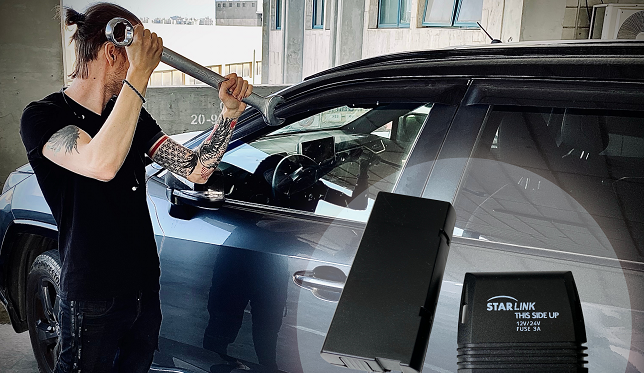How to prevent vehicle thefts?

One of the most common usages, perhaps the first automotive industry telematics services was known as SVR: stolen vehicle recovery.
Theft was always a big concern; individuals, insurance companies and even domestic departments of justice were always fighting in lowering the theft rate.
Regardless to the efforts put into preventing theft, the fight between the thieves and the vehicle owners seems to look like the battle between the mouse and the cat.
A decade ago, RF devices were commonly used however the comprehensive mobile networks deployment Vs the expensive cost and limit of the RF infrastructure, has pushed out the RF tracking technology, clearing the stage to the cellular based telematics technology and devices.
Since most thieves are relatively smart and “invest” in getting even smarter, it turned out that using a tracker would not be as effective as expected in what is called a “professional theft” scenario. These thieves are able to trace in seconds the concealed device and then either smash, remove, or simply block their operation leaving the vehicle naked, unprotected and in insurance words: A total loss.
What measures could be taken to prevent vehicle theft?
The scenario should be examined in 3 layers: before, while (track) and after (remote stop)
The “before” is mostly involved with verity selection of anti-theft devices such as immobilization systems and the way they are installed and use. eCut family of products are using keypad identification method to allow only the right owner to use the vehicle. This section for Immobilization is less directly linked to telematics but can very nicely expand a fleet solution with theft monitoring aspects such as fuel or cargo pilferage.
For the “while” and following the “after” layers, one may find it simple but the use of 2 telematics devices (in some cases use of 2 different technologies), could submit the best SVR solution with the highest chances to recover a stolen vehicle: a combination based on 2 devices identified as Main and Backup.
The Main device is set in a most ordinary way and in order to track/locate/monitor/manage the vehicle for personal use or as part of a fleet. The Main should include either a wired or wireless trigger output (such as Bluetooth). The Backup device, as tiny as possible, preferred a standalone/self-contained type using a long-time operation functionality must be concealed in a hard-to-find spot and set to a long sleep mode (low power consumption).
In a typical theft scenario, once the Main device is either destroyed or jammed, the trigger output (wired/wireless) is triggering the Backup device which will wake up and initiate communication with the server platform.
The timer factor is critical because the owner will surely prefer that the thief will not be able to detect and also smash both, the Main and Backup devices on the same time. The backup device is turned to be the hidden card! Once the timer elapsed, the location is frequently transmitted and the vehicle could be allegedly recovered.
And once it is recovered, sending a Safety Stop command is a simple operation while making sure the vehicle is parked or stopped and not driving. Stop commands could also be targeting a smart engine-kill modules and such are also part of the “before” layer of anti-theft solution.
Another option might be with a self-timed operation of a Stop feature, few minutes after the Main has been triggering the Backup device.
One might ask if the above analysis will also be productive in a case where a Jammer would be used while the vehicle is stolen?
Indeed, a use of a Jammer, means that the Backup device might not be that effective, however once the vehicle arrives in destination and the jammer is removed, it will start transmitting its location.
Alternatively, Backup product equipped with such communication technology that can’t be jammed with regular jammers is a better solution in this case.
For example, some vehicle financing markets allow cash installments for the vehicle. These financers sometimes encounter customers that cease paying due to personal cash flow problems.
When a customer came to us with this problem in the US, we tried to find a solution that will also pass a legal check such as GDPR in the EU, preventing personal information from being leaked, we came up with an idea of parking habits monitoring. The solution monitors the owners parking only. Which creates a personal clear profile about the locations this individual is mostly to be in different times of the week.
Any change in this profile would create an alert for the financing company to check before the payments stop.
Authors:

Eitan Kirshenboim
CMO, Business Development
ERM Advanced Telematics
Involved in planning and executing of the company’s marketing and sales strategy. In charge of the company’s global business development, design and maintenance of its marketing and sales infrastructure, in order to bounce the company to the next phase in becoming the leader of automotive Telematics, connect car, driver and passenger safety and IoT technology vendor in the world.

Arik GanTal
VP international marketing
ERM Advanced Telematics
A telematics generation automotive pioneer, expertise in vehicle and motorcycles anti-theft protection, telematics architecture solutions.
Published in Telematics Wire


